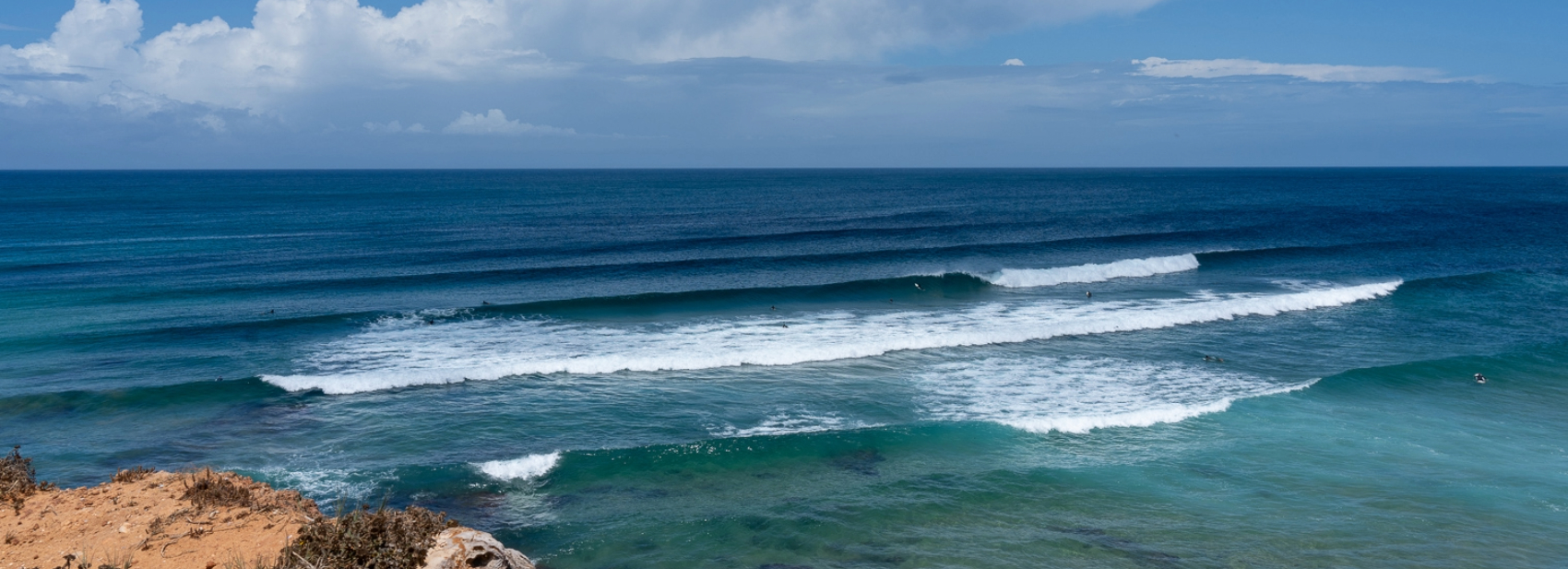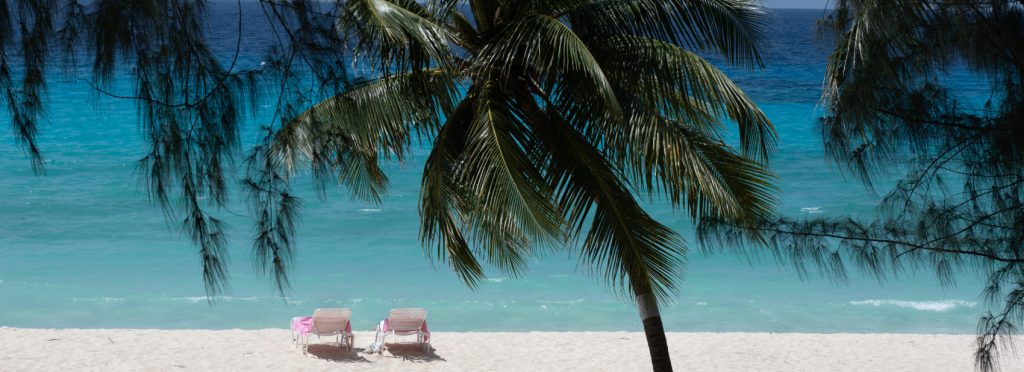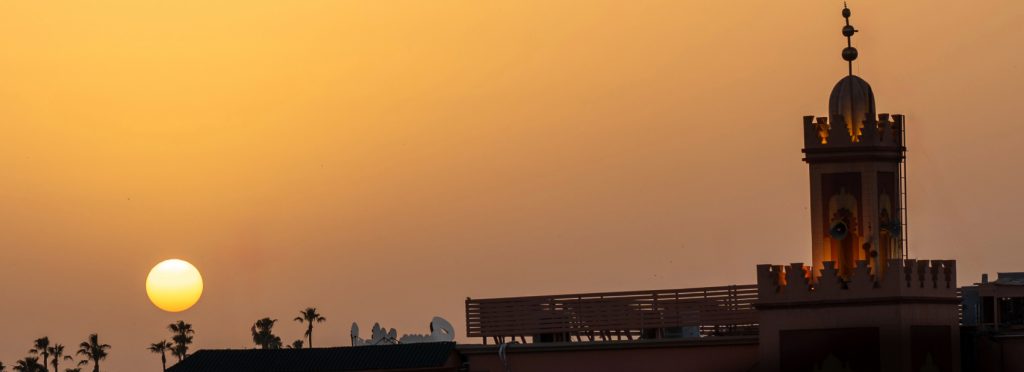If you’re looking for a killer surf trip destination, then a surf trip to the Algarve in Southern Portugal is right up there. The region can pick up a variety of swell directions on its south and west facing Atlantic coastlines. It has a year round sunny climate where you can go for boardies or bikinis in the height of summer, it’s inexpensive and it’s brimming with surf spots. I’ve travelled around the region many times over the years, both for work in the surf industry and just for surf trips. So here’s my rough guide to scoring waves in Portugal’s Algarve.
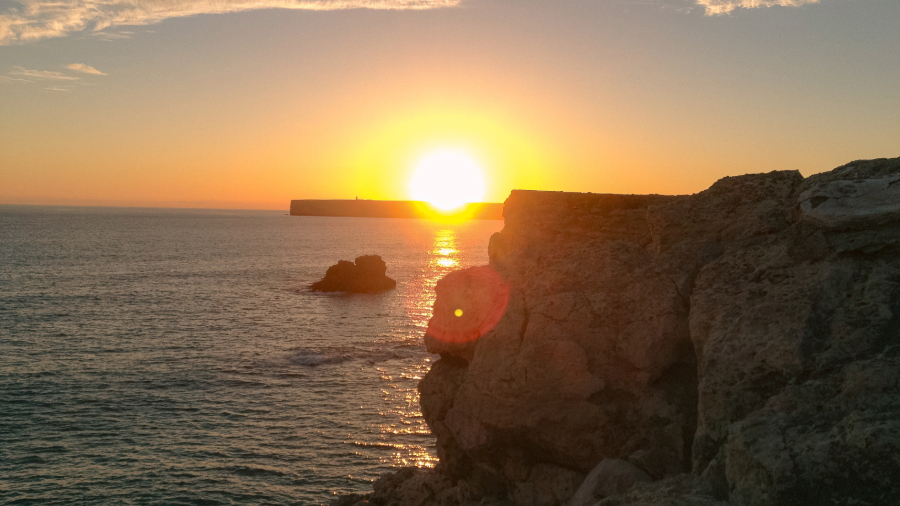
So how to get there, where to stay, what to take and, most importantly, where to surf?
- Getting there: The Algarve region is in the south-western tip of Europe so unless you’re on an extended road trip or van living around the continent then flying into Faro airport is the way to go. A number of low cost airlines from across Europe fly into Faro like Ryanair from London Stansted. With one way fares from £21.99 (this is basic one bag, hand luggage kind of deal, look to pay more with checked in bags, priority etc). However, if you’re looking to take your own surfboard then factor in additional sports equipment fees and rules which vary by airline. For example, as of 2024, Ryanair are quoting £55 each way per item/board up 20kgs.
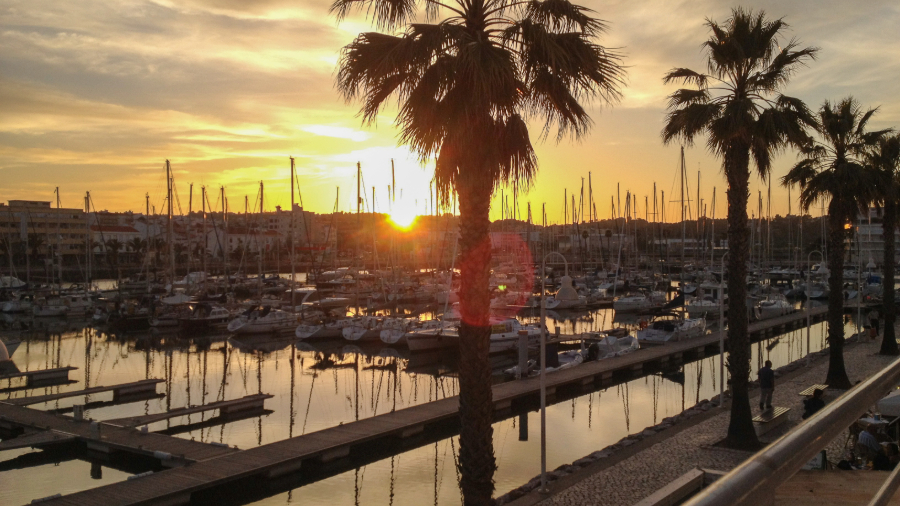
If you’re taking a surf trip to the Algarve and exploring the area then a hire car is essential. Faro airport is awash with car hire companies so here are some top tips. When searching for a Faro car hire deal, you’ll be offered a huge choice mostly from companies you’ve never heard of offering amazing deals. I’d recommend going with a well-known company like Budget or Hertz who have desks in the terminal. The reason being is that the other local suppliers are outside of arrivals and can be overwhelmed by customers in peak season. They will also charge extras which you thought were covered in the original price (I’ve been there and done it multiple times and it always happens!). The local car hire check-in staff also always seem to be on a go-slow, so you could be waiting a long time!
Another tip is to purchase your own excess cover insurance. Car hire always comes with basic insurance but they will look to upsell you additional CDW cover with lower excess fees. So I’d recommend purchasing your own cover online before you travel. It will save you a lot of money! Some car hire companies will also hire out soft racks for your boards.
2. Where to stay: There’s loads of choice of accommodation in the Algarve for surfers of all budgets. You can drop into some areas and stay put if you haven’t got access to a car but to make the most of your visit I’d say transport is a must have.
There are essentially two main zones, the south and west coasts. The south coast can get decent surf; however, it is less consistent, and needs a good S, SE, NW or SW swell to work which appear mostly in the winter months. You could stay in Faro or Albuferia and hope for a swell otherwise it’s a fair drive to get to the main surf spots further west.
So my top choice is further along the coast in a town called Lagos. It has a beautiful old town of narrow cobbled streets. It has plenty of nightlife, bars, restaurants, a marina, surf hostels, stunning cliffs and there’s a surf beach which will pick up west/SW swell. Lagos also has a number of surf shops with a decent selection of board hire as an alternative to lugging your own gear on a flight.
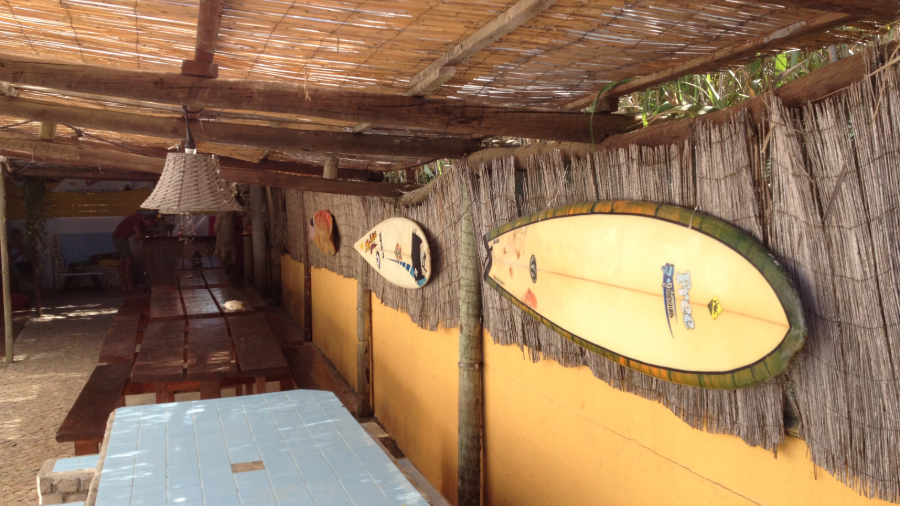
The next town along is Sagres which is on a headland right at the SW tip of Europe. Sagres area picks up swell from most directions. It has a great selection of surf spots like Tonel, Beliche and Mareta, so the town is considered a surf hub, with a number of surf hostels and board hire. However, for me personally the town itself is a bit boring!
Another option, this time further north along the west coast is a small town just inland called Aljezur. The area has loads of surf spots, surf hostels, board hire, surf schools etc but the town is a fairly sleepy.
Whichever location you choose to base yourself, you will need transport to explore. As discussed, a car is ideal but the other option is to stay at a surf hostel which offer packages for learning to surf, board hire and transport to beaches with other hostellers. Surf hostels can be great fun and a way to meet fellow travellers in a relatively inexpensive way. The locals running these places will also help you score the best waves on the day.
3. What to take: Winters in the Algarve are prime surf season with mild air and reasonable water temperatures, so a 4/3mm wetsuit and possibly some 3mm booties are the go. Evenings can get chilly so hoodies and lightweight jackets will be appreciated. Surf this time of year can be a decent size or there can be some mellower corners to be found, so bring or hire a board that suits the conditions.
Summer here is prime tourism time with hot days, warm nights and smaller waves. Towns like Lagos and Albuferia can be heaving and easy access surf sports can get zoo’d out. However, water temperatures are warm, sun is almost guaranteed and summer vibes permeate the crowds. In terms of a surfboard, a mid-length or longboard will suit most days and take a 3mm wetsuit for early summer or a 2mm shorty or boardies/swimsuit for later summer on those scorching hot days. Take plenty of ocean-friendly sunblock, warm water surf wax and summer clothes.
4. Where to surf: The Algarve has an amazing number of surf spots, including those lesser-known which need off-road vehicles to get to, but here are the main centres.
ON THE WEST COAST:
- Monte Clerigo – 10 mins drive north out of Aljezur, this beach can be less crowded than some other locations. There’s a sand bottom break to the north of the beach and a reef, rock, sand break in front of the village which can get hollow on bigger days. Can be exposed on westerly winds.
- Arrifana – This is the main draw of the Aljezur area. It’s protected by prevailing winds and still manages to stay clean even on onshore days. The main Arrifana beach peaks have lefts and rights, but it has a fair share of close-outs. On smaller days, it’s the perfect beginner surf spot with long shallow shelving sands for riding the white water. On those good chest high days, it is possible to score some lengthy rides, gliding over crystal clear, greeny-blue, glassy waves, it keeps bringing surfers back. Combine this with the stunning scenery of the bay and the warm summer water, it’s no wonder this place gets packed out. With surf schools, beginners, travelling surfers, tourists, kooks and local rippers battling for a wave, it gets a bit hectic. Parking spots are near impossible on busy days, even with the new car park, and it’s a long, steep winding walk down to the beach plus facilities are limited. Definitely a spot to visit though and assess on the day.
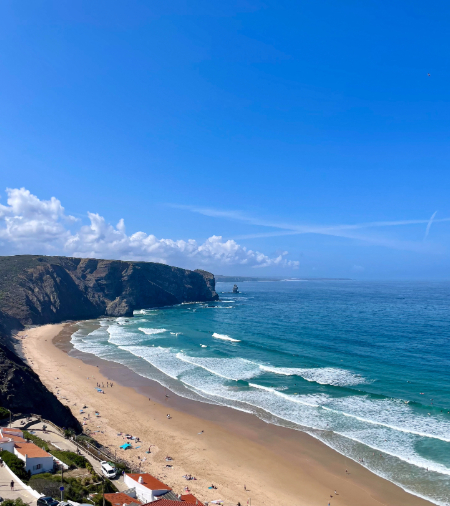
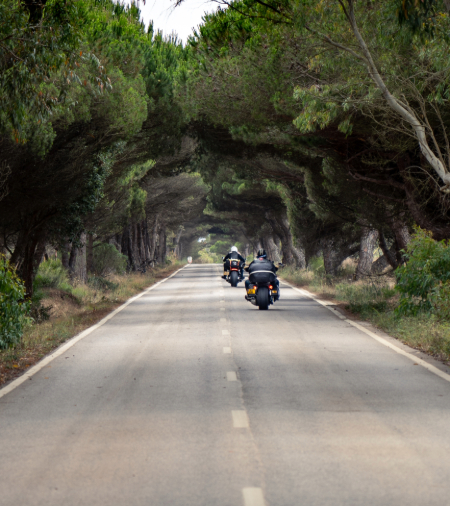
- Borderia beach – South of Aljezur on the N268 (which is a beautiful winding drive through the hills from Vila do Bispo towards Aljezur) is Borderia beach and one of my personal favourite spots. It’s a bit more of a trek to get to with a long access road to the limited parking spots and a lengthy walk down the cliffs and across the vast beach. Crowds are less of a factor here. The scenery is breathtaking with a beach and dunes that are more like a mini desert-scape, imposing cliffs at the southern end and a beach that stretches for miles which are worth a visit on their own. The surf here can be beginner to intermediate friendly but there are less surf schools operating. On the right swell, a long left point forms under the headland or there are numerous sand bar peaks further along. On clean, chest high days the waves pop up on the sand bar, with decent length rides running left and right. It’s a forgiving wave to get into and loads of fun. Facilities are very limited other than a beach cafe set back off the front and a small number of sunbeds to hire.
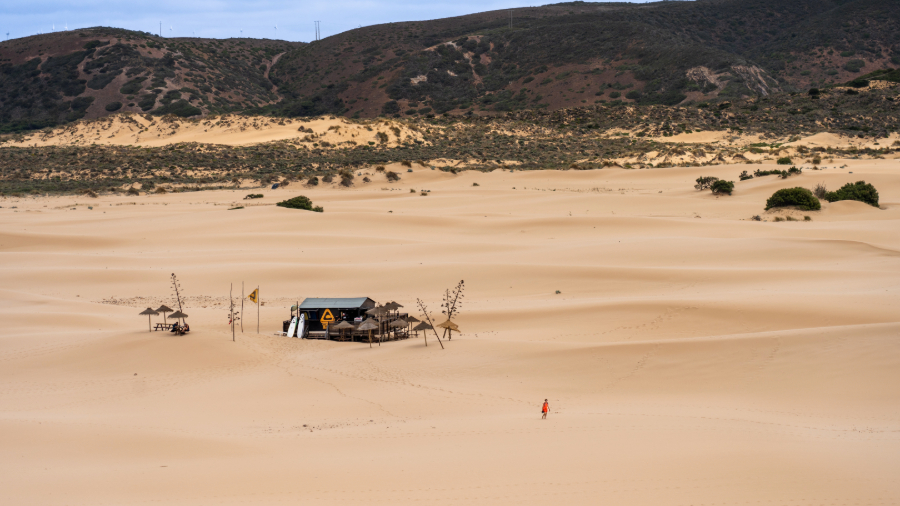
- Praia da Cordoama – This impressive beach is near to Vila Do Bispo. With Sagres and Lagos within easy driving distance, it’s often the first go-to for surf schools from these towns. However, it’s an expansive beach, with a large carpark and decent facilities like toilets, board hire, cafes etc so it can handle crowds. The beach itself is a mix of sand, reef and rocks and can hold decent size swells, but it’s exposed to the wind and is often blown out. You’ll find a mix of local shredders through to beginners here so pick a spot that suits and go have fun. Hazards here are the rocks at low tide and it can get super rippy.
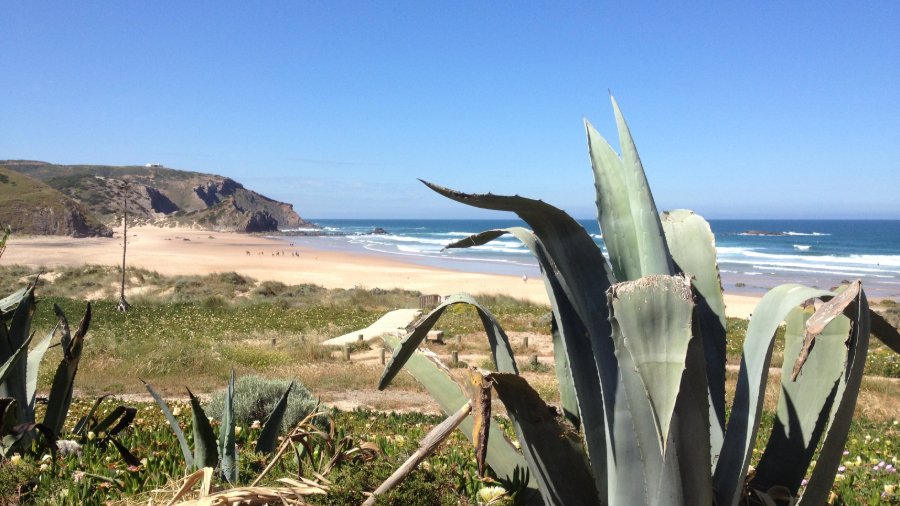
ON THE SOUTH COAST:
- Tonel – This south coast, west facing beach is located in Sagres and is one of the towns most popular spots. It’ll pick up a lot of swell, it’s picturesque (with the distinctive huge rock formation sat just offshore), it’s easy to get to, there’s a decent amount of parking and there’s a cute cafe/restaurant just off the beach. The spot has a number of peaks which are beginner friendly on smaller days but Tonel will hold surf up to 10ft. When it’s heavy and hollow, body boarders dominate the line up.
- Praia da Luz – located just outside of Lagos, Luz is a popular tourist destination in the summer. This time of year there may be occasional days of smaller surf which are beginner friendly but this spot can hold larger waves up to 6ft range that can break over the reef there. As it gets bigger, Luz can become rippy and rocks can be a hazard. Parking nearby is free and the town has plenty of facilities.
- Zavial – Praia do Zavial is one of the south coast gems if you’re an experienced surfer. Located inbetween Sagres and Lagos, this spot is tucked away so works best on a big north-west swell, so it’s more of a winter spot. Winds are often offshore here and went it starts to work, it’ll hold some size and barrel off the rocks. Coming out of deep water, this can be a heavy wave recommended for pros only. The line up is tight and dominated by local surfers and bodyboarders. Add in rips and rocks and you’ve a surf spot that can be class but needs respect.
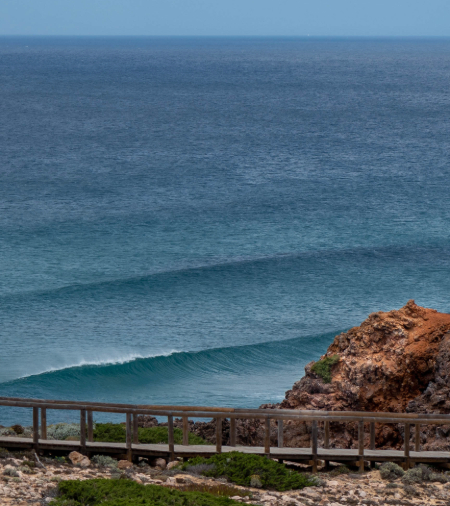
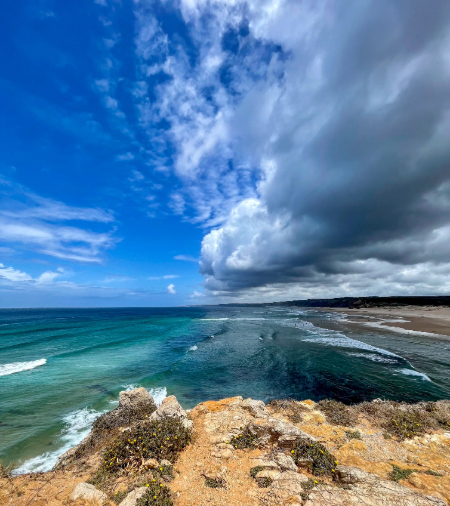
I hope this pocket-sized guide to a surf trip to the Algarve region is a useful start point for your planning. With its vast stretch of Atlantic coastline, the entire length of Portugal is a draw for surfers. However if you’re looking for warm water waves, sunny days, fantastic food, huge choice of accommodation or free camper parking, with chilled out vibes, then the Algarve has to be on the top of any surfer’s destination list. Dig out your warm Zog’s wax, sunblock and flips flops and go explore! 🙂
If you’re looking for waves further afield my guide to Sri Lanka is also worth a read. Thanks
* All images copyright Matt Strathern/@degrees.of.latitude

